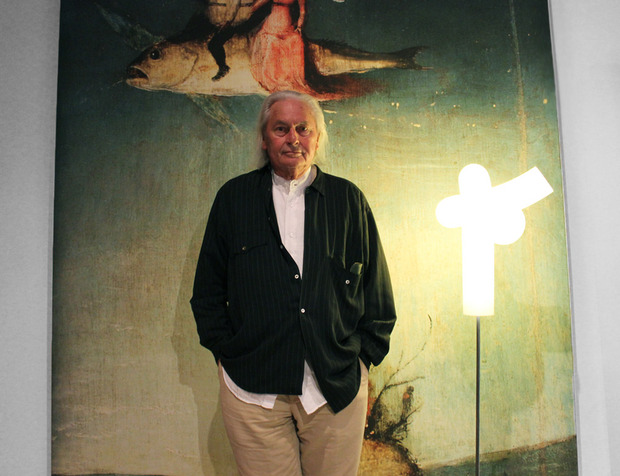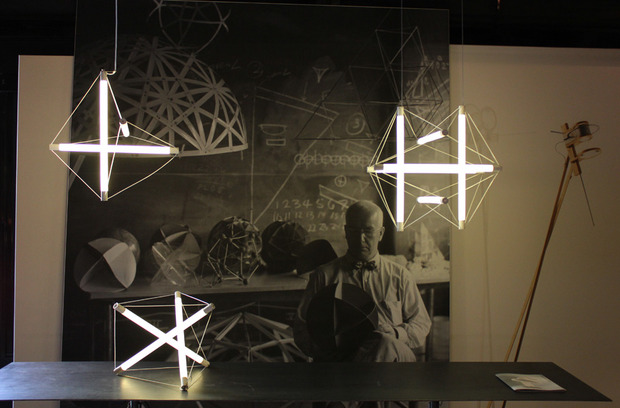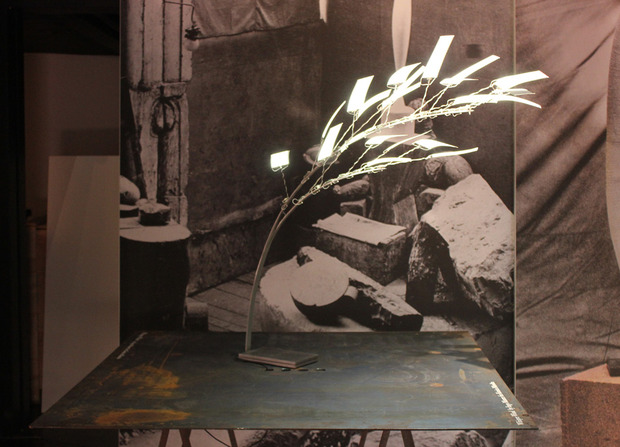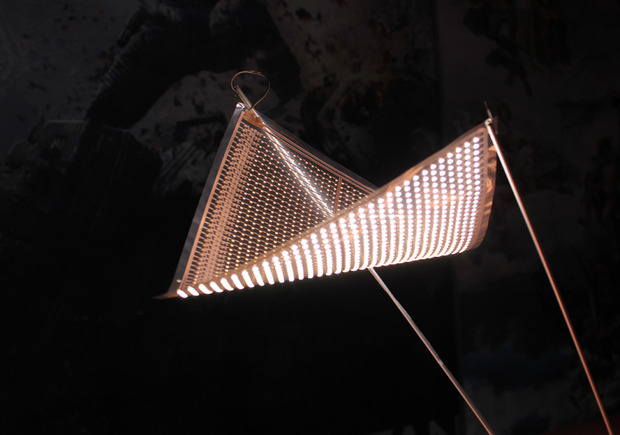Charged: Ingo Maurer Interview
The celebrated industrial designer speaks on the importance of spontaneity, taking risks and trusting your team

Few industrial designers have earned a foothold in the greater creative culture like Ingo Maurer, the German-born, New York-based designer of lighting and lighting installations. In the decades since founding his own design practice, Ingo Maurer GmbH, the celebrated designer has been exhibited in some of the world’s most prestigious museums, created custom installations for private art collectors and Parisian fashion shows, and received more awards and prizes than one man can carry. All the while continuing to experiment and championing innovations in lighting like LED and OLED. Yet through it all, his intense sense of direction, spirit and playfulness have never diminished. Nearly a half century later, his work still inspires awe in a way few other designers manage.

On a bright morning in Milan we recently visited Maurer’s “Il Laboratorio/The Atelier” exhibition at Spazio Krizia. Here, alongside a dedicated group of design enthusiasts that had queued outside for up to an hour before the doors opened, we had the rare opportunity to experience Maurer’s latest ideas from the source. After observing modular, magnetic OLED lamps, Buckminster Fuller-inspired fluorescents and LED candlesticks, we spoke with Ingo Maurer himself, who, despite his status as an octogenarian, is still very much full of youth and vigor. In what was one of the more lively, enjoyable interviews we’ve conducted in some time, we discussed the importance of taking risks, following your feelings and having a strong team to surround yourself with.

In Milan we saw all new work from your studio. How involved are you these days?
Very much, very much. I mean, the concept of the exhibition is mine. The direction of the pictures are mostly mine. A lot of details are, too. But then there’s also some things which, you know, you have an idea you cannot realize by yourself, so there’s a fantastic team behind me who has helped. For years, really. We’re all getting a bit old.
And I see them continuing in my spirit, with what I have done now for more than 40 years. That is, if they want, you know. They don’t have to. You cannot be an Ingo Maurer if you don’t feel it, right? I believe very much that people must follow their feelings, like I do. All my life I followed my feelings, and it was very difficult. After all, I have 70 people working with me and I’m responsible [for them] and also producing. And so it was, and it is still, a very interesting job.

Do you strive to evoke a certain feeling with each of your designs?
That is not a thought [that I have], though a large part of my work is to create energy in others. It comes completely naturally. It’s something like when you make a decision inside yourself at night when you can’t sleep: Is that right? Can it vary? Can it not vary? [Does it work] from an intellectual point of view or just an emotional point of view? How far can I really go? But it’s not planned. A lot of things with me come spontaneously.
What has been the single most important advancement in lighting that you’ve experienced?
Well, I have to go back a bit. The very first breakthrough for me was the system of YaYaHo—[a low-voltage, modular halogen system that suspends elements in variable positions from adjustable, horizontal cables]—which I did in 1984. I don’t like to be a dictator. I like to leave a lot of space for the people who buy it, or people who admire it, to change it and to play around like they want. I think each one can finish their own, to work with their own fantasy, no? This is very important to me. Then, of course, we had the first thing with LED. I was fascinated with LED. And am still convinced about the LEDs I made.

What do you think of OLED technology?
I think OLED is a good possibility, but it’s a very monotonous light. Just OLED by itself, I think it’s a bore. I very much like light that has a dimension, and OLED has no dimension. Unless you have the Whisper Wind—it’s flexible.
Can you tell us the story of the Whisper Wind?
We [wanted to] continue with OLED, but I didn’t want to bring all the things that I had already done into OLED. So Minolta—like camcorders—approached me and said they wanted to produce flexible OLEDs, and asked if I would be willing to do something. I said yes, so my colleagues started into it. But it wasn’t really right, so I made a sketch—what you see [on display in the exhibition]. So the first thing was a sketch, and then the idea and then the wind—the idea of the name. But I really have to mention that my team worked incredibly well because we decided to work with magnets. You can rearrange the whole thing.
Risk is very, very important on all levels in life. Otherwise you never get to know yourself.
Your designs are often attractive in an artful, sculptural way. How do you decide on the aesthetic?
I don’t like to analyze my things. I would be disturbed. I know a lot of designers who draw things at first that will be photogenic and I don’t. I like to work very subconsciously in a way; not completely, but not to compare [my work] to something else—just open something new for yourself. Risk is very, very important on all levels in life. It’s very important, otherwise you never get to know yourself.

These days, do you take much time when you’re in New York to just explore and see what you haven’t seen in a while?
I emigrated in 1960 to the States. I’ve lived in TriBeCa for 35 years. And sometimes I think I have to take a walk up town, but I’m a little too busy. You know, New York has a quality that I wouldn’t like to miss. It has gone down a bit, not because I’m used to it, but the quality of provocation, of being provoked. That’s very, very important. But I still feel a lot of things, things that I see, things that have something to do with me or could have something to do with me. Whatever: the thoughts, the streets. So all that, it gives me a lot of energy.
Visit Ingo Maurer Studio online for a closer look at what was recently shown in Milan, as well as the impressive array of other projects both completed and in the works—most notably the incredible Broken Egg installation, designed for the Inhotim Art Park in Brazil.
Photos by Graham Hiemstra












